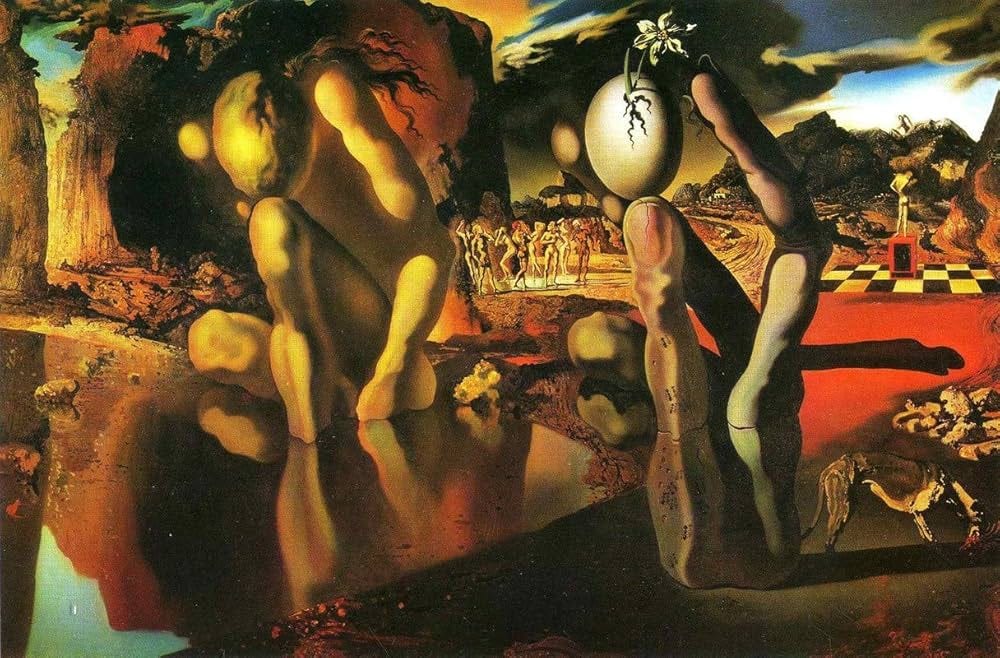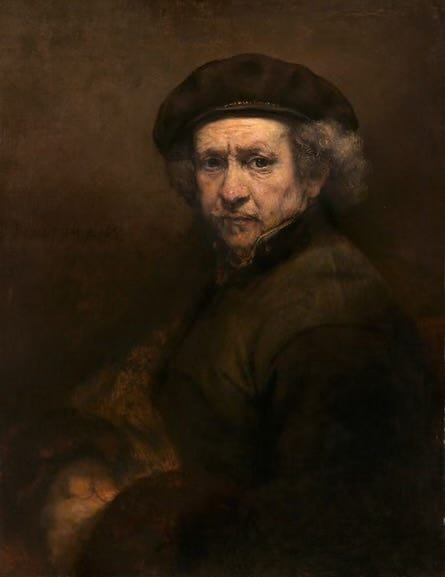Our Desire To Reveal The Human Within.
Modern day selfies aren't a new thing. We have always looked for validation of our existence.
Mark Raynes Roberts
It was 1971 when I first laid eyes on ‘Metamorphosis of Narcissus.’
My sister and I had found our way to the Tate Gallery located on the River Thames in London, not knowing what to expect. I was ten for goodness sake. I had no idea who the great artists were, past or present, but I can still remember viewing paintings by Picasso, Turner and even Roy Lichenstein’s WHAAM painting. (I even kept the catalogue from that exhibition for 45 years) But the picture that resonated with me the most that day was the oil painting by the Spanish surrealist Salvador Dalí, completed in 1937.
It is from Dalí's paranoiac-critical period and depicts his interpretation of the Greek myth of Narcissus, a beautiful youth who fell in love with his own reflection, eventually pining away and transforming into the flower that bears his name, the daffodil.
I had no idea what the painting represented at the time, but was taken by the dreamlike imagination of Dali’s work. In many ways, it was the gateway to my own love of art and creativity. His surrealistic style touched a nerve and surrealism quickly became part of my school art projects, the more out-of-this-world the better.
Dali’s interpretation of the Greek myth of Narcissus, a beautiful youth who fell in love with his own reflection, eventually pining away and transforming into the flower that bears his name, the daffodil.
Artists often create self-portraits not out of narcissism. But rather, they are exploring the human condition and the circumstances they find themselves in.
In today’s world of Instagram selfies, however, narcissism is usually at play. People don’t want to reflect an inner life as much as an enviable exterior one that may or may not be true.
The tale of Narcissus is never more evident than with the current leader of what we thought to be the free world…President Donald Trump! He has spent an inordinate amount of time honing his self-image, from his orange face cosmetics to combing over the remaining strands of his dyed-blond hair. It seems even Sarah Boardman’s 2019 portrait of him in the Colorado Capitol building has struck his narcissistic nerve. He demanded it be taken down as he found it unflattering. Boardman, on the other hand, believes it’s for the public to decide its fate, thinking that in time the portrait will reflect the moment. I tend to agree given his track record to date!
Which leads me into the world of self portraiture and some of the paintings and photographs that I have viewed and been most affected by.
There’s a reason I was particularly mesmerized by this Rembrandt self portrait painted when he was 53.
In 2014, Sarah and I were fortunate to be in London when the ‘Rembrandt: The Late Works” exhibition was held at The National Gallery. It was an extraordinary exhibition of his major works and underlined his status as the ‘master of light and shadow.’ It was one of those experiences in life, when you walk out speechless and in awe of what you have just viewed.
The one self portrait which truly resonated with me, (as shown above) was painted in 1656 when Rembrandt had to file for bankruptcy after a period of overspending (he was a shopaholic), financial hardship and a decline in commissions. His wife, Saskia, had also just died two years prior, so I found this painting particularly poignant. His eyes appear filled with the pain of loss.
Isn’t this what a self portrait should be…revealing? Let me reveal some more to you.





